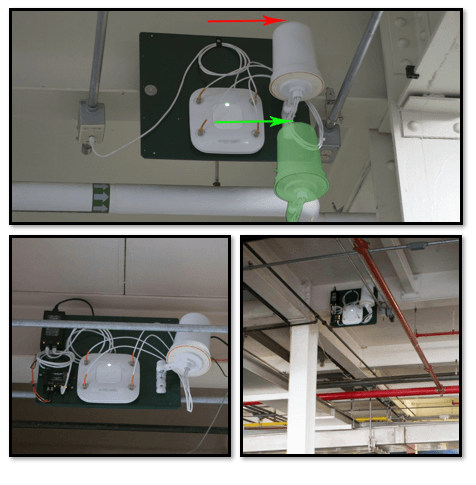
With the explosive growth of personal Wi-Fi devices over the past several years, IoT more recently, and mobile-first initiatives popping up today, AP density has increased while coverage cells have decreased. Because of this, RF shadows in high client density environments affect smaller areas than in the days where one AP would support 10,000+ square feet indoors. This is good news in that a bad AP mounting location doesn’t cripple an entire department or wing of a building. But the effects can be just as damaging if the wrong person is stuck in an RF shadow and bad perception of the office Wi-Fi starts to affect the IT department’s reputation.
First, you may be wondering, “so what the heck is an RF Shadow?” I would describe it as an area with lower Received Signal Strength Indicator (RSSI) than the rest of a Basic Service Set (BSS), typically caused by a physical attenuator. Or, in less geeky terms, your Wi-Fi in this area sucks because the AP is hiding behind your heating duct. I’m not making it up either, this happens as you will see a little further down.
Now the two top RF shadow induced problems I’ve come across both as a consultant and as an IT wireless engineer are perception killers in offices and production show stoppers in manufacturing/distribution centers. Both have caused a company from thousands to millions of dollars over the life of a WLAN. Imagine the following real scenarios:
-
Perception killer: A forwarded email to you from your IT director with a frustrated message from a Senior VP of sales complaining to the CIO that she may have just lost a major contract to a competitor because the demo failed over the new Wi-Fi she just approved and paid for.
-
Productivity killer: A complaint from the head of manufacturing to your IT director because her entire staff had to work overtime for the third day in a row following last weekend’s WLAN upgrade which has introduced coverage holes that were not there before.
Now, which would rather deal with? I would think neither.
Below are some examples of AP placement in an office environment where RF shadows were a major factor.
Here are examples of AP placement in a manufacturing environment where RF shadows directly impacted operations productivity. The green ghosted antenna image was a correct placement example I created for a cabling vendor to help resolve the issues at a customer site.
Multiple APs mounted above I-Beams.
The metal from the I-beam and metal board caused enough of an RF shadow to create large coverage holes in storage areas and prevented adequate signal from reaching around manufacturing machinery.
As one can imagine, these office and manufacturing examples generated plenty of headaches for both IT and the users that depended on the service. Being conscious of physical obstructions is very important in a WLAN deployment. If you have questions or would like to discuss how American Digital can help you resolve your wireless woes, you can contact us at marketing@americandigital.com

